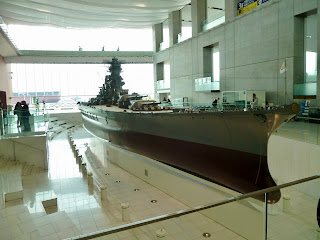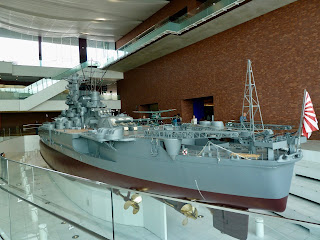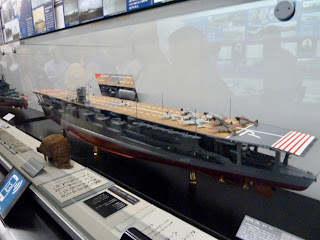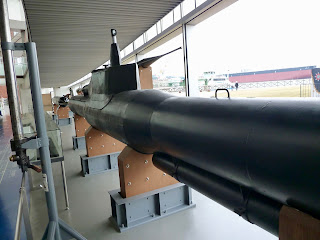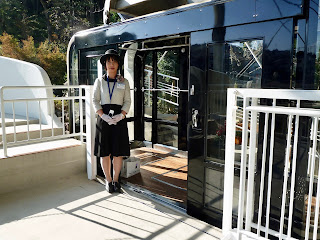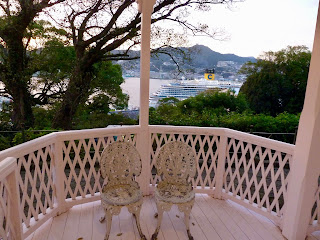25th - 26th Oct 2019
 |
| Never saw it. |
Off back to UK by Aeroflot flight from Tokyo Narita airport via Moscow to London Heathrow.
Leaving the hotel at 7.00am by Underground to Tokyo Main and then on by the efficient Narita Express train to the airport (covered by my JR Railcard). The airport is well out to the east of town and a 1¼ hour train ride. I arrived far too early and had time to kill before the 12.15 flight. Bought a bottle of saké as a souvenir.
The Aeroflot flight left and arrived on time. It was a 9½ hour flight to Moscow Sheremetyevo airport in a Boeing 777. I travelled 'economy' with, conveniently, a spare seat next to me and the service was good, with a plentiful supply of free wine. Pleasant cabin crew. I was quite impressed.
There was a 3 hour stop-over in Moscow and the facilities, restaurants etc. there were fine. Then on again with Aeroflot to London Heathrow, a 4 hour flight, to arrive at 10.00pm after 30 mins delay due to 'holding' over LHR for some unknown reason. Not Aeroflot's fault.
 I always find it extraordinary that in Japan all the people who staff the immigration, security, cafés, shops, transport etc. etc. are smartly turned out and polite Japanese. In Vietnam they are Vietnamese. In India they are Indian. When you get to London you are pushed to find a Brit, or someone looking British, doing any of these jobs (there must be some!). Foreigners arriving at Heathrow could be forgiven for not knowing if they had arrived in Bengal, Beirut, Bulgaria or Burkina Faso let alone Britain. Also, Heathrow is such a higgledy-piggledy mess with a confusing maze of inter-connecting passageways and inter-terminal transport systems. It is, frankly, scruffy, confusing and out of date. And it was raining.
I always find it extraordinary that in Japan all the people who staff the immigration, security, cafés, shops, transport etc. etc. are smartly turned out and polite Japanese. In Vietnam they are Vietnamese. In India they are Indian. When you get to London you are pushed to find a Brit, or someone looking British, doing any of these jobs (there must be some!). Foreigners arriving at Heathrow could be forgiven for not knowing if they had arrived in Bengal, Beirut, Bulgaria or Burkina Faso let alone Britain. Also, Heathrow is such a higgledy-piggledy mess with a confusing maze of inter-connecting passageways and inter-terminal transport systems. It is, frankly, scruffy, confusing and out of date. And it was raining.
 I arrived too late to get transport home so I had to find local overnight accommodation. Fortunately there was a desk in Terminal 4 which could organise this (manned by an Algerian) which he did quite efficiently and not too expensively. It involved getting a hotel bus (£6) from what seemed like a bit of waste ground and parking lot outside Terminal 3 and having to hang about here in the cold drizzly wet for about 25 minutes.
I arrived too late to get transport home so I had to find local overnight accommodation. Fortunately there was a desk in Terminal 4 which could organise this (manned by an Algerian) which he did quite efficiently and not too expensively. It involved getting a hotel bus (£6) from what seemed like a bit of waste ground and parking lot outside Terminal 3 and having to hang about here in the cold drizzly wet for about 25 minutes.
Left: The scruffy bus stop with a makeshift half-collapsed signboard.The Aeroflot flight left and arrived on time. It was a 9½ hour flight to Moscow Sheremetyevo airport in a Boeing 777. I travelled 'economy' with, conveniently, a spare seat next to me and the service was good, with a plentiful supply of free wine. Pleasant cabin crew. I was quite impressed.
There was a 3 hour stop-over in Moscow and the facilities, restaurants etc. there were fine. Then on again with Aeroflot to London Heathrow, a 4 hour flight, to arrive at 10.00pm after 30 mins delay due to 'holding' over LHR for some unknown reason. Not Aeroflot's fault.
 I always find it extraordinary that in Japan all the people who staff the immigration, security, cafés, shops, transport etc. etc. are smartly turned out and polite Japanese. In Vietnam they are Vietnamese. In India they are Indian. When you get to London you are pushed to find a Brit, or someone looking British, doing any of these jobs (there must be some!). Foreigners arriving at Heathrow could be forgiven for not knowing if they had arrived in Bengal, Beirut, Bulgaria or Burkina Faso let alone Britain. Also, Heathrow is such a higgledy-piggledy mess with a confusing maze of inter-connecting passageways and inter-terminal transport systems. It is, frankly, scruffy, confusing and out of date. And it was raining.
I always find it extraordinary that in Japan all the people who staff the immigration, security, cafés, shops, transport etc. etc. are smartly turned out and polite Japanese. In Vietnam they are Vietnamese. In India they are Indian. When you get to London you are pushed to find a Brit, or someone looking British, doing any of these jobs (there must be some!). Foreigners arriving at Heathrow could be forgiven for not knowing if they had arrived in Bengal, Beirut, Bulgaria or Burkina Faso let alone Britain. Also, Heathrow is such a higgledy-piggledy mess with a confusing maze of inter-connecting passageways and inter-terminal transport systems. It is, frankly, scruffy, confusing and out of date. And it was raining. I arrived too late to get transport home so I had to find local overnight accommodation. Fortunately there was a desk in Terminal 4 which could organise this (manned by an Algerian) which he did quite efficiently and not too expensively. It involved getting a hotel bus (£6) from what seemed like a bit of waste ground and parking lot outside Terminal 3 and having to hang about here in the cold drizzly wet for about 25 minutes.
I arrived too late to get transport home so I had to find local overnight accommodation. Fortunately there was a desk in Terminal 4 which could organise this (manned by an Algerian) which he did quite efficiently and not too expensively. It involved getting a hotel bus (£6) from what seemed like a bit of waste ground and parking lot outside Terminal 3 and having to hang about here in the cold drizzly wet for about 25 minutes.
A twenty minute drive to the Mercure Airport Hotel and dropped off on the main road opposite! I was a bit concerned on arrival to find that a large crowd of Indian or Pakistani guests were in the foyer trying to book in ahead of me. I had visions of waiting in a queue for half the rest of the night. Fortunately their leader or tour guide did it quite quickly for all of them. I was checked in by a charming Greek guy at the desk. In fact it turned out to be a very decent hotel, and the bar was still open, with a comfortable room. I woke up the next morning to realise that the England v New Zealand Rugby match was on at 9.00am so managed to watch that in some comfort in my room. Then a walk to the nearby Hayes & Harlington railway station for a train via Reading and back home by 3.00pm.
Impressions of Japan
On the plus side;
1. Ultra-efficient transport systems with excellent information facilities. Actually, everything for tourists was efficient and well organised.
2. Superior automation.
3. Polite, to the point of obsequiousness. Lots of bowing and smiling (and white gloves).
4. Short, sensible and helful announcements in English on trains and Underground.
5. Good value if you use a Japanese Railcard (if you travel a lot by rail).
6. Clean and tidy with no sign of any yobbish or anti-social behaviour.
7. Excellent and relatively cheap hotels available at short notice. (esp. the APA ones).
8. Lots of 7/11, Family Mart, Lawsons shops for supplies.
9. Lack of fat 'kangerillapigs' wobbling about (as per UK). They mostly looked slim and trim and smartly dressed. Diet? Tradition?
10. Fast free WiFi everywhere including trains, railway stations, bars and hotels.
11. Oirish or British Pubs (or equivalent) in every major town if you want home comforts.
On the minus side:
1. Somewhat 'robotic' in their outlook and behaviour. They always stick to the rules regardless of common sense.
2. Japanese food is something I never got the hang of. Strange menus, often in Japanese, and I don't like sushi or raw fishy things! Beef? exorbitant Kobe stuff breaks the bank.
3. Language is a problem outside major cities or tourist sites.
4. I was told that as a tourist things are fantastic, but it is somewhat less convivial if you work there. Their work ethic and hierarchical system is harsh to the point of stressful. Not my problem!
So, for a tourist, it is a fascinating and most enjoyable place to visit. Recommended.





















